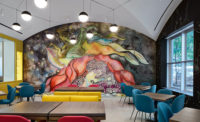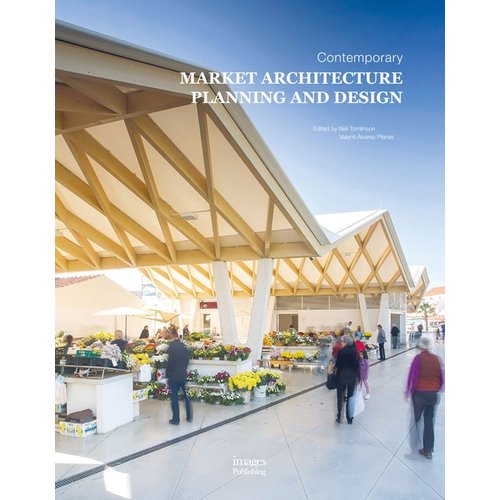Museum of Contemporary Art San Diego
Gluckman Mayner Architects takes cues from railroad life in the caboose-red addition and renovated baggage building of the San Diego Museum of Contemporary Art
Architects & Firms
San Diego
The Museum of Contemporary Art San Diego, based in a converted, much-expanded landmark, the Ellen Scripps house, designed by Irving Gill in 1915 in idyllic La Jolla, may be as well known for its stunning, oceanside setting as for its bold, nationally acclaimed exhibitions. With the opening of expanded satellite galleries in a historic, former railway baggage building in downtown San Diego last January, the museum became an urban magnet, with its opening and early attendance exceeding projections.
The Joan and Irwin Jacobs Building, the renovated, low-slung, long-shuttered former baggage building, adjoins the city’s beloved, more elaborate Santa Fe Depot, which faces Broadway near San Diego Bay.

Several years later, the museum was selected by the city’s downtown redevelopment agency to restore and renovate the building for exhibition space. The museum plan included a controversial move that museum officials said was a deal breaker: To reserve the maximum area possible for art and new media installations, the museum needed to demolish an adjacent nonhistoric railway building and replace it with a contemporary, 13,680-square-foot addition—the new David C. Copley Building—to house offices, education rooms, meeting space, and Amtrak storage.
Hugh M. Davies, the museum’s director, hired what he called his “dream team” for this two-part project: Milford Wayne Donaldson, FAIA, a San Diego–based preservation architect (who left the project after he was named California’s state historic preservation officer); and Richard Gluckman, FAIA, of Gluckman Mayner Architects of New York. Donaldson’s successor firm, Heritage Architecture & Planning, restored the baggage building’s exterior and worked with Gluckman to keep the interior renovations, including a mandatory seismic retrofit, to a minimum.
As with other historic buildings Gluckman has transformed, such as New York City’s Dia Center and Pittsburgh’s Andy Warhol Museum, he kept the vast interior spaces of the Jacobs as open as possible to maximize opportunities for installation artists. The height of the largest gallery, comparable to the size of a basketball court, peaks at about 38 feet; the exception is a small, jewel-box of a gallery with low ceilings and climate control.
Elegant glass storefronts mark the museum entrance—without detracting from the historic facade—and the trackside exit to the west onto a brick-paved arcade, where Richard Serra placed his commissioned sculpture, a series of steel blocks that respond to the arcade’s rhythm and proportions. Inside, three adjacent galleries, totaling nearly 14,000 square feet, including one just under 4,700 square feet, flow into one another. They can be closed off by huge, rolling wood doors with refined hardware that echo old railway buildings, but with no hint of the rustic vernacular.
PeopleArchitect: Richard Gluckman, FAIA (registered) – Principal-in-Charge Associate architect Engineer(s): Civil Engineers: Consultant(s) Construction Manager: Environmental graphics and signage: Custom office furniture: Permanent Art commissions: General contractor: Photographer additional photography CAD system, project management, or other software used:
|
ProductsStructural system: Exterior cladding Sheetmetal: Ehmcke Sheetmetal (custom fabrication) Roofing Windows Aluminum: Glazing Doors Metal doors: Wood doors: Sliding doors: Architectural Millwork (fabricator for custom wood doors) Steel roller track & hangers for custom wood doors (Jacobs Building): Stainless Steel pulls for custom wood doors (Jacobs Building): Fire-control doors, security grilles: Overhead coiling doors: Hardware Cylinders: Sliding Door Hardware (Addition only) Hinges: RIXSON Specialty Door Controls (offset pivot hinges) Closers: Magnetic Hold-opens: Exit devices: Security devices: Interior finishes Suspension grid: Cabinetwork and custom woodwork: Montbleau & Associates Paints and stains: Plastic laminate: Special surfacing: Corian “Macadam”: Floor and wall tile 3”x6” Ceramic wall tile: Resilient flooring: Furnishings Reception furniture: Chairs: Conference room: Office chairs: Lighting Hubbell QL505 wall-washer (customized by Litelab) Interior ambient lighting: Downlights: Exterior: Controls: Conveyance Plumbing Drinking fountains: |




